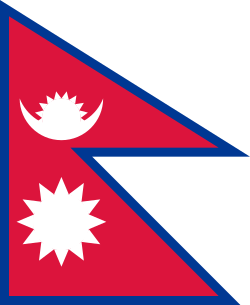This article needs to be updated.(May 2017) |
The following outline is provided as an overview of and topical guide to Nepal:
Contents
- General reference
- Geography of Nepal
- Environment of Nepal
- Provinces of Nepal
- Demography of Nepal
- Government and politics of Nepal
- Branches of the government of Nepal
- Foreign relations of Nepal
- Law and order in Nepal
- Military of Nepal
- Provincial government
- Local government
- History of Nepal
- History of Nepal, by period
- History of Nepal, by region
- History of Nepal, by subject
- Culture of Nepal
- Art in Nepal
- Cuisine of Nepal
- Festivals of Nepal
- Languages of Nepal
- Organisations based in Nepal
- People of Nepal
- Religion in Nepal
- Sports in Nepal
- Economy and infrastructure of Nepal
- Banking in Nepal
- Communications in Nepal
- Telecommunications in Nepal
- Nepalese media
- Online News Media in Nepal
- Companies of Nepal
- Trade unions of Nepal
- Transport in Nepal
- Education in Nepal
- Schools in Nepal
- Universities and colleges in Nepal
- Health in Nepal
- See also
- References
- External links
Nepal is a landlocked sovereign state in South Asia. The country is bordered to the north by China, and to the south, east, and west by India. The Himalayas in the country's northern region has eight of the world's ten highest mountains, including Mount Everest, called Sagarmatha in Nepali.



